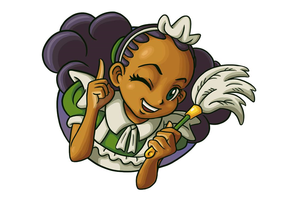Joseph Haydn (partially lost music sheet manuscripts; 18th-19th century): Difference between revisions
mNo edit summary |
m (Added needing work tag, removed irrelevant segment, and other minor changes) |
||
| Line 1: | Line 1: | ||
{| style="margin: auto;" | |||
|[[File:Lmwtan cleanup.png|frameless|300px|link=LMW-tan]] | |||
|This article has been tagged as <span style="color:blue">'''Needing work'''</span> due to its lack of content and references. | |||
|} | |||
---- | |||
{{InfoboxLost | {{InfoboxLost | ||
|title=<center>Joseph Haydn ( | |title=<center>Joseph Haydn (music manuscripts)</center> | ||
|image=Joseph Haydn.jpg | |image=Joseph Haydn.jpg | ||
|imagecaption=Haydn's portrait, painted in 1792. | |imagecaption=Haydn's portrait, painted in 1792. | ||
|status=<span style="color: | |status=<span style="color:orange;">'''Partially Lost'''</span> | ||
}} | }} | ||
'''Joseph Haydn''' is one of the most prolific composers of the Classical Era. With well over 100 symphonies, several concertos written for various instruments, and a few operas to his name, the library of his work has proven quite difficult to keep accounted for. He was a friend of Mozart's and a teacher of Beethoven. He continued to work well into his old age and up to his death garnering the nickname "Vater Haydn" or in English "Papa Haydn". | '''Joseph Haydn''' is one of the most prolific composers of the Classical Era. With well over 100 symphonies, several concertos written for various instruments, and a few operas to his name, the library of his work has proven quite difficult to keep accounted for. He was a friend of Mozart's and a teacher of Beethoven. He continued to work well into his old age and up to his death garnering the nickname "Vater Haydn" or in English "Papa Haydn". | ||
In 1979, Esterhaza, the opera house of which he worked was set on fire and many of his non-widely published works were destroyed. Every once in a great while, a work is discovered in a score copy, but many are feared to be forever lost. While his operas and symphonies remain mostly intact, a vast majority of his string quartets, concertos, and piano pieces are yet to be found. His most famous concerto, the one for Double Bass in D Minor only has 2 measures surviving. | In 1979, Esterhaza, the opera house of which he worked was set on fire and many of his non-widely published works were destroyed. Every once in a great while, a work is discovered in a score copy, but many are feared to be forever lost. While his operas and symphonies remain mostly intact, a vast majority of his string quartets, concertos, and piano pieces are yet to be found. His most famous concerto, the one for Double Bass in D Minor only has 2 measures surviving. | ||
[[Category:Partially lost media]] | |||
[[Category:Lost music]] | [[Category:Lost music]] | ||
[[Category:Lost literature]] | [[Category:Lost literature]] | ||
[[Category:Historic]] | [[Category:Historic]] | ||
[[Category:Needing work]] | |||
Revision as of 09:23, 30 June 2017

|
This article has been tagged as Needing work due to its lack of content and references. |
Joseph Haydn is one of the most prolific composers of the Classical Era. With well over 100 symphonies, several concertos written for various instruments, and a few operas to his name, the library of his work has proven quite difficult to keep accounted for. He was a friend of Mozart's and a teacher of Beethoven. He continued to work well into his old age and up to his death garnering the nickname "Vater Haydn" or in English "Papa Haydn".
In 1979, Esterhaza, the opera house of which he worked was set on fire and many of his non-widely published works were destroyed. Every once in a great while, a work is discovered in a score copy, but many are feared to be forever lost. While his operas and symphonies remain mostly intact, a vast majority of his string quartets, concertos, and piano pieces are yet to be found. His most famous concerto, the one for Double Bass in D Minor only has 2 measures surviving.
